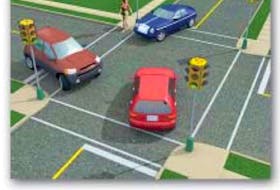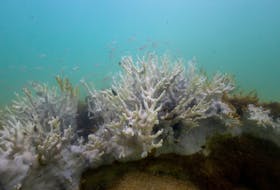In September 2016, the second lift bridge spanning Placentia Gut and named for early Confederation supporter Sir Ambrose Shea was officially opened.
I was away from my home in Placentia at that time tending to a family matter, and missed the ribbon cutting, the cake slicing, the fireworks, the speeding vehicles with Simpsonian drivers at the wheel jockeying to be the first across, and the speech-making on pride and progress from various levels of politicians.
Being back in Placentia later that fall, I walked across the new bridge to Jerseyside and then back again — a bracing walk, for in that mini climate, with the sea below and the southwest on the left and the northeast on the right, January’s weather can be interchangeable with July. And vice versa.
There are three spans on the bridge: from Placentia on the south shore of the Gut out to a concrete abutment about one-third across the water and from Jerseyside on the north to an identical abutment, again about one-third across the water. Then, in the middle, there is the hoist-able (the word risible would, perhaps, be incorrect) span of the bridge. All three spans are each about 30 metres or 100 feet long.
Paralleling the wide two-lane roadway, there are six sections of sidewalk, with the centre span having two sections of steel decking as sidewalks and the other four sections — two on the Jersey side and two on the Placentia span — are poured-in-place concrete.
Walking along, mere weeks after the official opening, I noticed numerous cracks in the concrete sidewalks. Being trained by a large Albertan construction company many years ago in spotting deficiencies in materials and workmanship, I counted 56 serious cracks. These were not spidery surface cracks and most of them ran right across the six-foot (1.8-metre) wide sidewalks and could be plainly seen on the vertical, exposed edges of the sidewalks (eight inches or 200 millimetres high) before disappearing (from view, mind you) under the asphalt topping laid on the two vehicular traffic concreted decks beneath.
A few days later (mid-November 2016), I telephoned the minister’s office at the Department of Transportation and was dutifully intercepted by a clerk blissfully unaware of accountability, transparency and openness, who switched me over to what may have been the mailroom or, perhaps, lost and found. The minister wasn’t there.
The matter is very serious. The deficiencies are not cosmetic and may well be structural, or maybe just the sophomoric omission of expansion joints.
A few more days passed, and not to be outdone, I phoned again. This time I was passed off to an assistant deputy minister (his name, for those of you who like to know such details, is very similar to that of one of President Donald Trump’s chiefs of staff. American Army, I believe.) He listened and then informed me there was a contractor from the bridge construction still in the area and he would have the cracking concrete looked into.
Back home late this October (2017), and almost a year later, I again crossed the bridge on foot and the number of sidewalk cracks has grown. Now there are 77; 19 each on the two slabs on the Jerseyside, and one slab on the Placentia end with 17 and the other with 22.
I haven’t wasted my time or breath on a phone call to the ADM or his new minister.
Now, these are not sidewalks along some quaint country garden path or sidewalks in some tricky-tacky suburban bedroom community.
The matter is very serious. The deficiencies are not cosmetic and may well be structural, or maybe just the sophomoric omission of expansion joints.
The cracks provide entry for water, the ever-present salt air, and road salt to reach the reinforcing steel in the sidewalks, and from there down to the reinforced concrete slabs of the two road decks.
Rebar rusts and concrete loses its built-in tensile strength, even in multi-million-dollar supposedly better than state-of-the-art pieces of public infrastructure.
By the way, the four concrete sidewalks of the older bridge, officially opened in 1961 (I was there that day, aged nine) and decommissioned in 2016 (after 55 years), had not a single crack on them or through them.
Tom Careen
Placentia

![['The Placentia lift bridge was out of commission on Aug. 4 and government officials were trying to get it fixed after a mechanical failure left it hanging at an angle. — Photo by James McLeod/The Telegram']](https://saltwire.imgix.net/placentia-bridge-2690761.jpg?cs=srgb&fit=crop&h=568&w=847&dpr=1&auto=enhance%2Cformat%2Ccompress)







